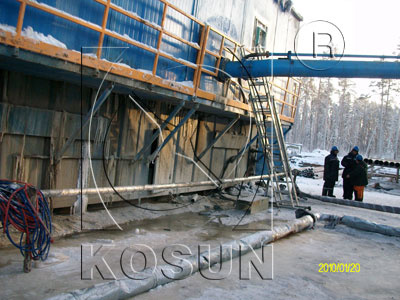- Home
- Products
-
-
Solids Control Equipment
- Linear Motion Shale Shaker
- Decanter Centrifuge
- Mud Cleaner
- Vacuum Degasser
- Centrifugal Pump
- Shear Pump
- Submersible Slurry Pump
- Mud Agitator
- Mud Gun
- Jet Mud Mixer
- Desilter
- Water Tank
- LS606 Shale Shaker
- Mud Tank
- LS1850 Shale Shaker
- Diesel Tank
- Dome-shaped mud cleaner
- Vertical cyclone desilter
- KQG30 Automatic Tank Cleaning
- MD210 Drilling Mud Cleaner
-
Solids Control System
- Solids Control System
- Mobile Solids Control System
- Arctic Solids Control System
- Drilling Mud Cooling System
- Liquid Mud Plant (LMP )
-
TBM
- Tunnel Boring Mud System
-
HDD
- HDD Mud Recovery System
-
-
- News
- Services
- Marketing
- About Us
- Contact Us
- Videos
Home > KOSUN News >
Some Things to Consider When Designing Drilling Fluids
Dec 25, 2013
READ: Drilling fluids design is of great importance for drilling engineering design, factoring complication analysis in neighboring wellbore and complication prediction of the well in question, types, major parameters and basic ingredients of drilling fluids for different depths, mud circulating system configuration and application requirements.
Drilling fluids design is of great importance for drilling engineering design, mainly determined by lithology, strata pressure, pshysicochemical properties of shale formation,.formation fluid, cross section of formation pressure(pore pressure, collapse pressure and fracture pressure), geothermal gradient, etc.; and restrainted by reservior protection requirements, complication in completion wells of local and neighboring blocks and drilling fluids application, geographical and drilling engineering requirements, relevant drilling mud technologies and techniques, state and regional environmental regulations.

Principles of Drilling Fluids Design:
1. It should be done on drilling geological design, drilling engineering design, other relevant materials as well as concerned technological standards, regulations and norms.
2. After analysis of influential elements to exploration safety quality and economic benefits, some drilling fluids technological measures should be drawn out.
Drilling fluids is designed with:
1. Complication analysis in neighboring wellbore and complication prediction of the well in question;
2. Types, major parameters and basic ingredients of drilling fluids for different depths;
3. Material planning and capital budget of drilling fluids for different depths;
4. Mud consumption prediction;
5. Reservior protection requirements;
6. mud circulating system configuration and application requirements;
7. Requirements on mud testing apparatus’s configuration;
8. Drilling fluids concoction and management;
9. Requirements on contingency materials and kill fluids reserves;
10. Prediction and dealing of borehole complications;
11. Requirements on HSE management.


